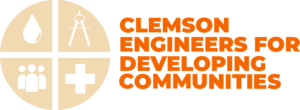Aquaculture in Haiti has the potential to provide a sustainable food source for the high number of individuals who are extremely food insecure. There are multiple fish farms owned by community members in Ba Cange, located in the Central Plateau of Haiti. Aquaculture in Haiti primarily takes the form of the small-scale farming of pink and gray Tilapia. There are many fish farmers operating in this area, however the scales and operational procedures of these farms vary greatly. Despite utilizing all of their available resources, these farms are producing at only a fraction of their potential. The aquaculture group of Clemson Engineers for Developing Countries set out to perform a multi-disciplinary analysis of current fish farming practices individuals in Ba Cange and establish interventions that will improve these practices and increase production. We have conducted extensive research this semester through on the ground interviews with local fish farmers conducted by CEDC intern and a review of existing relevant literature. These on the ground interviews addressed the methods of operation for some of the aquaculture systems currently in place, as well as addressing specific questions we had for owners of the systems. It became evident that there were a variety of different challenges facing each fish farm. Our efforts have been focused on “upstream” farming practices which include feeding practices and farming techniques as well as “downstream” practices which include transportation and marketing of the Tilapia. One of the primary facets of our research in regards to the “upstream” practices addressed alternative food sources to commercial fish food. In terms of the “downstream” practices of aquaculture, most of the research regarded either the socioeconomic implications of markets or the technical considerations of handling fish for transport.
Please wait while flipbook is loading. For more related info, FAQs and issues please refer to DearFlip WordPress Flipbook Plugin Help documentation.
